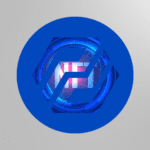NFTs (Non-Fungible Tokens) are a form of digital asset that can be used to store data and transfer ownership.
In March 2021, An original Banksy $95k piece was burnt so it only lives on as an NFT.
The digitalized art was later sold for $380,000. Talk about burning money!
NFTs have several properties in common with cryptocurrencies, but differ from them by not being fungible – meaning their value isn’t affected when different units start circulating on the market because each NFT has an individual code that cannot be consumed or copied.
NFTs are unique in their nature. They cannot be replaced by another copy or variation of their underlying data. NFTs can be traded without an intermediary. They can represent physical art, digital assets like land plots, characters, in-game weapons, and even music tracks.
In this article, we’ll explore the pros and cons of NFTs.
Pro: Trending & the Fuss
The first thing you notice about NFTs is that they’re the ‘talk of the town.’ They are what’s exciting and hot in crypto right now. The excitement that surrounds NFTs as well as the significant changes to the way we value things is nothing short of revolutionary. We’re finally able to place a price on things we always wondered what their price could be.
By purchasing, holding, and or trading an NFT, you feel you’re a part of a remarkable movement. The NFT narrative has that sense of being ‘trendy’ and ‘cool’ to it.
Pro: Trading in on creativity
NFTs represent an opportunity for Artists and Musicians to capitalize on their art and earn more. As we know, the last 2 years have been rough for bands, singers, and artists alike. Anyone who’s in the creative space can ‘tokenize’ their work and make an additional income.
Creators can also benefit from the added exposure when they list their NFTs on marketplaces. All in all, it’s great from a branding perspective and an economic point of view.
Pro: Authenticity & Immutability
Part of what makes NFTs unique and thrilling is their authenticity element. Non-fungible means they’re non-replaceable and non-dividable. There are countless amounts of $100 bills floating around and being printed every day. A $100 bill can be broken down into two $50 bills and so on. But not NFTs.
NFTs can’t be changed because they’re verified on a public ledger (the blockchain). The most well-known network holding NFTs is the Ethereum blockchain. But many other networks like Solana and Avalanche have entered the space and are posing serious rivalry to Ethereum.
NFTs make the intrinsic value of something become extrinsic and ‘real.’
Pro: Converting Gaming Efforts into Money
Imagine being able to capitalize on the hours you’ve spent on your favorite games. With NFTs, you can. One of the many use cases of NFTs is the ability to turn digital assets in games like characters, skins, vehicles, land plots into NFT collectibles. They can be traded or ‘used’ in a way by other players.
So, your efforts could pay off, literally, with NFTs.
Pro: The Power of Smart Contracts through NFTs
The built-in technology of smart contracts allows the original holder of the NFT to receive a ‘royalty’ whenever the NFT gets sold. The payments are secure, guaranteed, and free of middlemen. This opens up all sorts of possibilities in the Merchandise, Reselling, and Sales niches.
Pro: Sense of Ownership & Support
One of the most notable aspects of NFTs is the sense of ownership that comes along with owning an NFT. You feel like a ‘Digital Connoisseur.’ People feel a sense of pride and support for the artist. It is a way of communicating status.
This is why you often see many celebrities and people often having an NFT like a CryptoPunk or Bored Ape as their profile picture on Social Media. Here’s the rap singer Future with his proudly-owned Bored Ape.
Con: Digital Art Is Never As Experiencing
Art is a unique experience. No matter how advanced technology gets, it can’t replace the sense of touching physical art. This will always remain a drawback. The sense of touch would always have that higher perceived value. And it goes well beyond touch. Digital Art can’t replace the feeling of seeing the art with your own eyes.
Con: Putting Your Money Where It May Not Count
NFTs are a new and exciting way to invest in creative works, but they lack the physical assets that back traditional art pieces. This can cause questions about their legitimacy as well as how much value you should put on them since there’s no concrete evidence of anything actually being produced in the physical world.
Con: Environmental Costs and High Fees
The Ethereum network spends more power than some countries combined. NFTs require a lot of electrical energy and costwise, they’re not really affordable for most people, let alone the waiting time – which can be inconvenient! But as these tokens start moving over to Solana’s environmentally friendly blockchain system this could mean big things come our way…
Con: Price Volatility & Lack of Liquidity
Another issue is the volatility in their price – NFTs are based on the value of very volatile crypto like Ethereum and Solana. There’s a possibility that the NFT will be worth nothing the next day. Their value is completely uncertain. There is no guarantee that NFTs will appreciate in value like stocks or bonds.
You could find yourself holding an NFT for months before a decent offers come up. And even that is not guaranteed. So if you have the intention of buying NFTs from marketplaces and reselling them, there’s a lot of risk involved.
Did you know that in August 2021, Logan Paul dropped over $600,000 on an NFT Bumblee? And the highest bid for it is only $6,900 – that stings.
Con: NFTs Lack of Copyrights
Even though you own the token behind the art, you don’t really own the copyrights to it. So what good is it if you don’t actually have total control over the art?
Con: NFTs lack of Dividends
NFTs have never paid dividends as stocks and bonds do. But that does not mean that in the future that won’t change. That’s the beauty of smart contracts. It’s possible that NFTs could have their own ‘dividends.’ In fact, there’s already the ability to stake NFTs but it’s relatively new and in its infancy. NFT holders could lock their assets and potentially receive rewards.
Con: Scams and Fraud
Just because you’re the owner of the authentic token behind a piece of art, doesn’t mean that others can’t right-click and save it and upload it as an NFT and sell it. Of course, it wouldn’t be original. It would be a scam. Having the ability to copy such a thing devalues the original piece.
Con: NFTs are not taken seriously
There’s a time and place for everything, even NFTs. The technology still has its doubters but as more businesses and industries start using them to store data and or transfer value — these laughters will turn into celebrations. In the meantime, here are some funny NFT memes to enjoy.
The future for NFTs look bright
NFTs are more than just tokens in the blockchain. They represent massive opportunities for many industries to get involved in. Here’s a previous article about NFTs use cases.
About Peerplays
We are dedicated to empowering people’s freedom to create greater outcomes, giving them control over how they own and collaborate worldwide. The core foundation for Peerplays success in 2023 relies primarily on the release and promotion of mechanisms incorporating decentralized ID, gamification, and ‘handshake’ like onboarding that is easily accessible to people who use smartphones. At Peerplays, we are on a mission to revolutionize the world of blockchain technology and empower individuals with the freedom to take control of their digital lives. To achieve this ambitious goal, we are constantly on the lookout for the most talented individuals who share our passion for innovation and our commitment to decentralization. If you believe in the transformative potential of blockchain technology and are eager to contribute your skills and expertise to this groundbreaking project, we want to hear from you.





[…] are non-fungible tokens that can represent digital or physical assets on a blockchain. They can be used by musicians to sell their work directly to fans, create exclusive content, and ear…. However, there are also some drawbacks to consider**234**, such […]